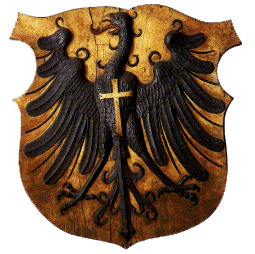Location and Territory
|
 |
| Map of the Landkreis Rottweil |
The Landkreis Rottweil
The present day, after several territorial changes, especially in the course of the great communal reform in the Seventies of the last century, the Landkreis Rottweil as one of the 44 counties (35 Landkreise and 9 Stadtkreise) in Baden-Württemberg covers an area of 769 square kilometers and has a population of about 142.000. The population density of about 180 persons per square kilometer lies significantly under the average of Baden-Württemberg (nearly 300).
The Landkreis Rottweil covers part of the mountains of the Black Forest and the Swabian Alb, including the highest elevation of the Alb, the 1.015 meter high Lemberg.
Neighboring districts are (from north clockwise) Freudenstadt, Zollernalbkreis (Balingen), Tuttlingen, Schwarzwald-Baar-Kreis (Villingen-Schwenningen) and Ortenaukreis (Offenburg). Together with the Schwarzwald-Baar-Kreis and the Landkreis Tuttlingen it makes up the region "Schwarzwald-Baar-Heuberg".
 |
The imperial eagle in the coat of arms of the Landkreis derives from the coat of arms of the free imperial city Rottweil. Below the eagle is a deer antler, the symbol of Württemberg, as part of the district (especially in the north and northwest) belonged to the duchy (later kingdom) of Württemberg well before Rottweil itself became part of it. The shield on the breast of the eagle show the colors of Austria, symbolizing the area around the cities of Oberndorf and Schramberg which were acquired by Austria in the late 14th century ("Vorderösterreich"). Look at the map integrated in the description of the territory of the Reichsstadt Rottweil (prior 1802). |
The Landkreis Rottweil today has 22 political communities (six of them are towns, two of them so called "Große Kreisstädte"). Many of them originated from mergers of smaller, formerly independent communities in the last fourty years or even earlier (in the following alphabetically ordered list in brackets). The biggest municipiality is Rottweil, the smallest Schenkenzell.
The following coats of arms from the International Civic Arms site (http://www.ngw.nl), a great site with coats of arms from all over the world.
 |
- Aichhalden (villages Aichhalden, Rötenberg, Bach und Altenberg)
|
..... |
..... |
 |
- Bösingen (villages Bösingen, Herrenzimmern)
|
..... |
..... |
 |
- Deißlingen (villages Deißlingen + Hinterhölzer Höfe/Heiligenhof, Lauffen)
|
..... |
..... |
 |
- Dietingen (villages Böhringen, Dietingen, Gößlingen, Irslingen, Maria Hochheim, Rotenzimmern)
|
..... |
..... |
 |
- Dornhan (town Dornhan, villages Aischfeld, Bettenhausen, Busenweiler, Fürnsal, Gundelshausen, Leinstetten, Marschalkenzimmern, Weiden)
|
..... |
..... |
 |
- Dunningen (villages Dunningen, Lackendorf, Seedorf)
|
..... |
..... |
 |
- Epfendorf (villages Epfendorf, Harthausen, Talhausen, Trichtingen)
|
..... |
..... |
|
|
..... |
..... |
 |
|
..... |
..... |
 |
|
..... |
..... |
 |
|
..... |
..... |
 |
- Oberndorf am Neckar (town Oberndorf, villages Aistaig, Altoberndorf, Beffendorf, Bochingen, Boll, Hochmössingen, Lindenhof)
|
..... |
..... |
 |
- Rottweil (town Rottweil, RW-Altstadt, Bühlingen, Feckenhausen, Göllsdorf, Hausen o.R. + Oberrotenstein, Hochwald, Neufra, Neukirch, Rottenmünster, Vaihinger Hof, Zepfenhan)
|
..... |
..... |
 |
|
..... |
..... |
 |
- Schiltach (town Schiltach, village Lehengericht)
|
..... |
..... |
 |
- Schramberg (town Schramberg, villages Heiligenbronn, Sulgen, Waldmössingen)
|
..... |
..... |
 |
- Sulz am Neckar (town Sulz, villages Bergfelden, Dürrenmettstetten, Fischingen, Holzhausen, Hopfau, Mühlheim, Neunthausen, Renfrizhausen + Weiherhof, Sigmarswangen)
|
..... |
..... |
 |
|
..... |
..... |
 |
|
..... |
..... |
 |
- Vöhringen (villages Vöhringen, Wittershausen)
|
..... |
..... |
 |
|
..... |
..... |
 |
- Zimmern o.R. (villages Flözlingen, Horgen, Stetten o.R., Zimmern o.R.)
|
..... |
..... |
The County Rottweil has also many single large farms ("Höfe"). Most of them are omitted here. The territory of the former independent Reichsstadt Rottweil was much smaller. It included, however, several villages that now belong to other counties.
|

